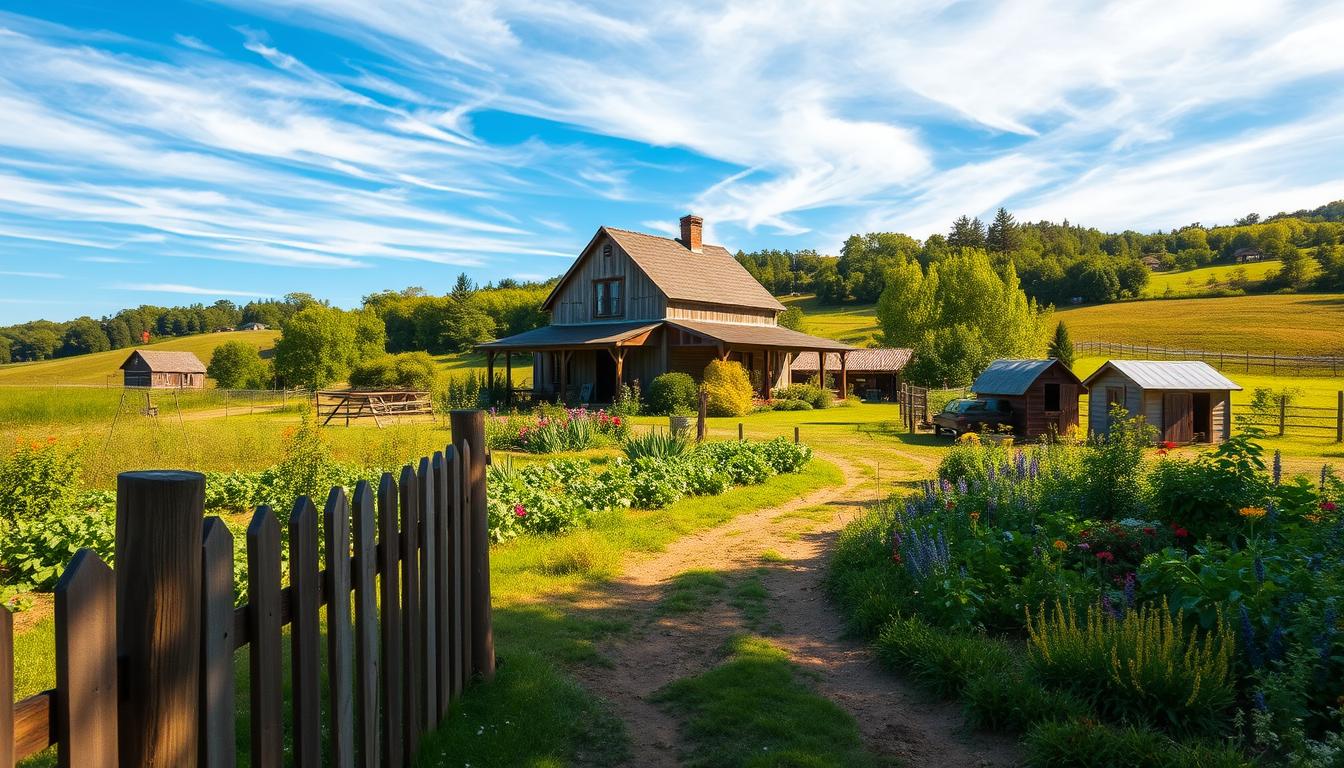Starting a homesteading journey can feel overwhelming, but it’s more accessible than you think. Whether you live in a bustling city or a quiet rural area, this lifestyle is within reach. Many people begin by mastering small skills like composting or container gardening, even in apartments. These simple steps can lay the foundation for a more self-sufficient life.
Books like Flour Water Salt Yeast and Fermented Vegetables are excellent resources to build essential skills. Learning from experts and practicing at home can make the transition smoother. Financial planning is also crucial. Paying off debt and investing wisely can set you up for long-term success.
Building a community is another key step. Local farming networks and online tutorials can provide support and inspiration. Creating a vision board or Pinterest plan can help you stay focused on your goals. This guide will walk you through the essential steps to start your journey with confidence.
Key Takeaways
- Homesteading is achievable in both urban and rural settings.
- Start with small skills like composting or container gardening.
- Essential books can help you build foundational knowledge.
- Financial planning is critical for long-term success.
- Community support can make the journey easier and more enjoyable.
What Is Homesteading?
Modern homesteading blends traditional skills with contemporary innovation. It’s a lifestyle focused on creating a self-sufficient life, whether in rural areas or urban spaces. This movement emphasizes growing your own food, reducing waste, and integrating renewable energy systems.
In the US, homesteading often involves small-scale farming and raising livestock. In the UK, similar practices are called smallholdings or crofting. Both share the goal of sustainability and independence. Urban homesteading takes this further, with container gardens, chickens, and even vertical farming in small spaces.
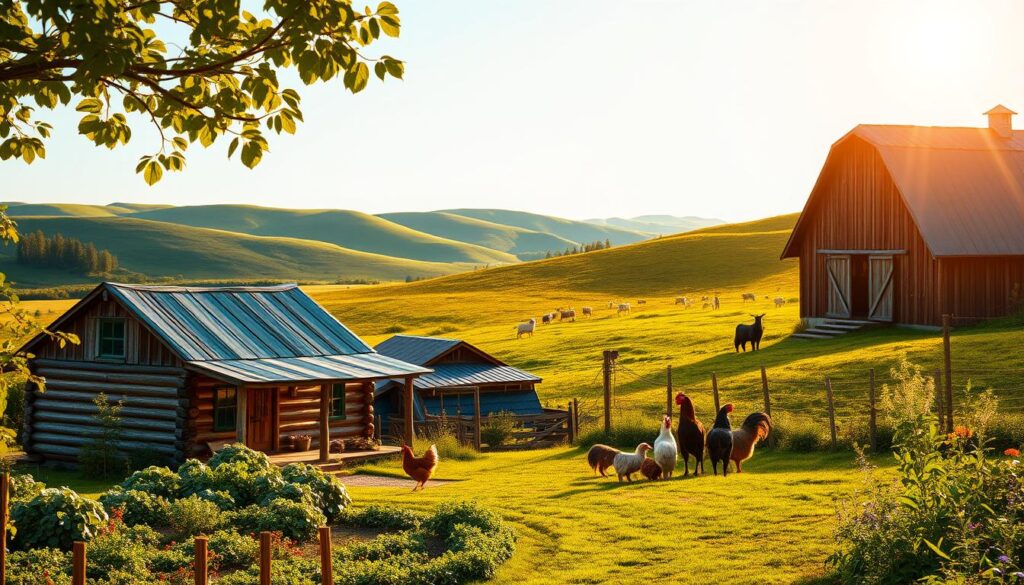
Core components of homesteading include food production, preservation, and waste reduction. Many homesteaders also use solar or wind power to reduce their environmental impact. Legal considerations, like urban livestock regulations, play a role in planning your homestead.
Historically, the Homestead Act of 1862 encouraged settlers to develop land in the US. Today, homesteading doesn’t require vast acreage. Success stories show thriving farms on just one acre. Micro-livestock and vertical farming make it possible to homestead even in small homes.
| Aspect | Rural Homesteading | Urban Homesteading |
|---|---|---|
| Space | Large plots of land | Small apartments or yards |
| Focus | Livestock and crops | Container gardens and micro-livestock |
| Energy | Solar, wind, or hydro systems | Compact solar panels |
Homesteading is more than a lifestyle; it’s a commitment to sustainability and independence. Whether you’re in the countryside or the city, this approach to life offers endless possibilities.
Why Start Homesteading?
Homesteading offers a unique path to a more sustainable and fulfilling life. By growing your own food, you can reduce your carbon footprint by up to 30%. This lifestyle also promotes healthier eating, as homegrown vegetables have 40% higher nutrient density, according to the USDA.
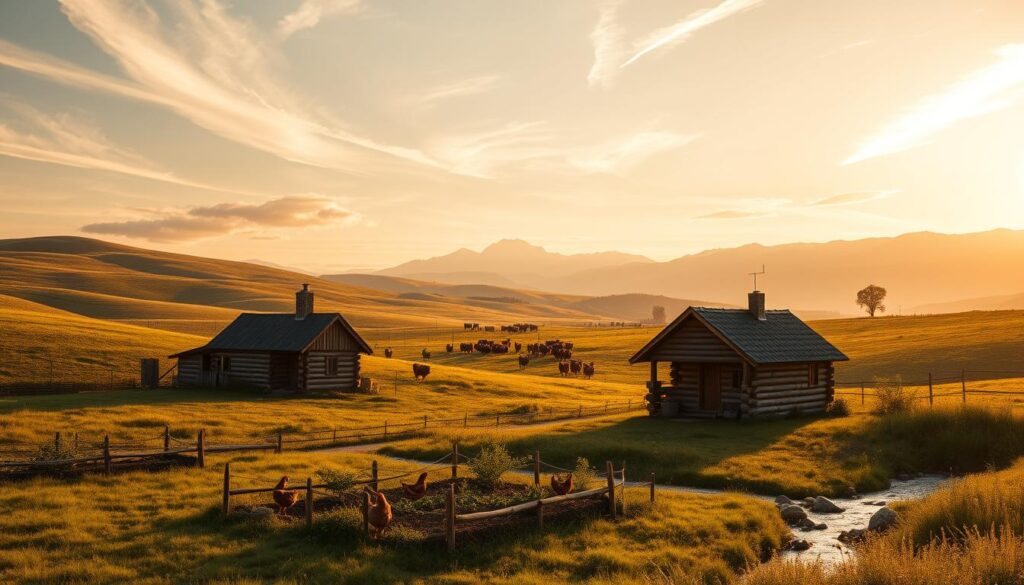
One of the most significant benefits is waste reduction. Composting alone can cut household waste by 65%. This not only helps the environment but also enriches your garden soil. Additionally, chemical-free produce ensures better health for you and your family.
Financial savings are another advantage. Homesteaders often save up to $1,500 annually on grocery bills. Making items like bread at home costs just $0.50 compared to $4 at the store. These small changes add up over time.
Outdoor work, like gardening, has been shown to reduce stress and improve mental well-being. Studies highlight the calming effects of purposeful activities in nature. Urban success stories, like balconies producing 100 pounds of vegetables, prove that anyone can take part in this way of life.
Homesteading also provides food security during supply chain disruptions. Learning essential skills, such as food preservation, ensures you’re prepared for any situation. While it requires effort, the rewards are worth it.
This lifestyle isn’t just about practicality; it’s about building connections. Sharing knowledge across generations fosters a sense of community. Homesteading is a meaningful part of creating a better future for yourself and the planet.
How to Begin Homesteading: A Step-by-Step Guide
Embarking on a self-sufficient lifestyle requires careful planning and preparation. Many successful homesteaders started with container gardens, proving that small steps lead to big results. This guide will walk you through the essential phases to get started on your journey.
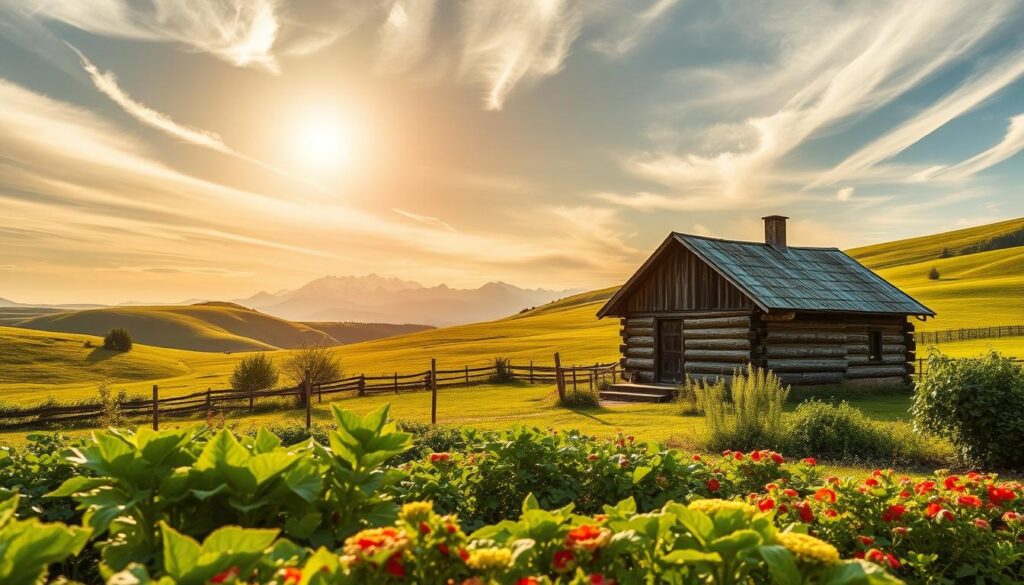
First, focus on building foundational skills. Start with windowsill herbs or a small container garden. These projects are manageable and teach you the basics of plant care. Over time, you can expand to larger gardens or even livestock.
Next, invest in essential tools. Soil testing kits and microclimate analysis tools help you understand your environment. These items are often affordable, with many options under $50. Proper planning ensures your homestead thrives from the start.
Research local zoning laws and legal requirements. Urban areas may have restrictions on livestock or water usage. Knowing these rules saves you from costly mistakes. Legal documents like water rights and easements are also crucial for long-term success.
Consider a mentorship program through local agricultural extensions. Learning from experienced homesteaders can accelerate your progress. They can offer practical advice and help you avoid common pitfalls, such as overplanting or poor crop rotation.
Finally, create a timeline for your journey. The average preparation period before land purchase is 18 months. Use this time to refine your skills, gather resources, and build a solid plan. With dedication and the right approach, your dream of a self-sufficient life can become a reality.
Assessing Your Goals and Resources
Evaluating your resources is the first step toward a successful homestead. Start by understanding your space and skills. A small suburban lot can be just as productive as a large rural property with the right planning.

Use the USDA plant hardiness zone map to select crops suited to your climate. This tool ensures your garden thrives from the start. For water sources, consider rainwater catchment systems or well drilling. Testing well water costs $150-$300 nationally, ensuring safety for your family and livestock.
Calculate sun exposure using mobile apps to optimize garden placement. Soil quality is equally important. Essential amendments like compost or lime can transform poor soil into fertile ground. Here’s a quick comparison of rural vs urban startup costs:
| Aspect | Rural Homestead | Urban Homestead |
|---|---|---|
| Land Cost | $50,000+ | $10,000-$30,000 |
| Water Access | Well or rainwater | Municipal or rainwater |
| Energy | Solar or wind | Compact solar panels |
Involve your family in the planning process. A participation expectations worksheet helps align everyone’s goals. For off-grid planning, conduct an energy audit to determine your needs. Wildlife impact assessments and emergency preparedness checklists ensure your homestead is sustainable and secure.
Downloadable goal-setting templates can guide your journey. Whether you’re converting a 1/4 acre lot or starting on a larger scale, these tools make the process manageable. With careful assessment, your dream of a self-sufficient life is within reach.
Planning Your Homestead
Crafting a successful homestead starts with thoughtful planning and strategic design. The right location and layout can make all the difference in creating a productive and sustainable property. Whether you’re in the city or countryside, understanding your space and resources is key.
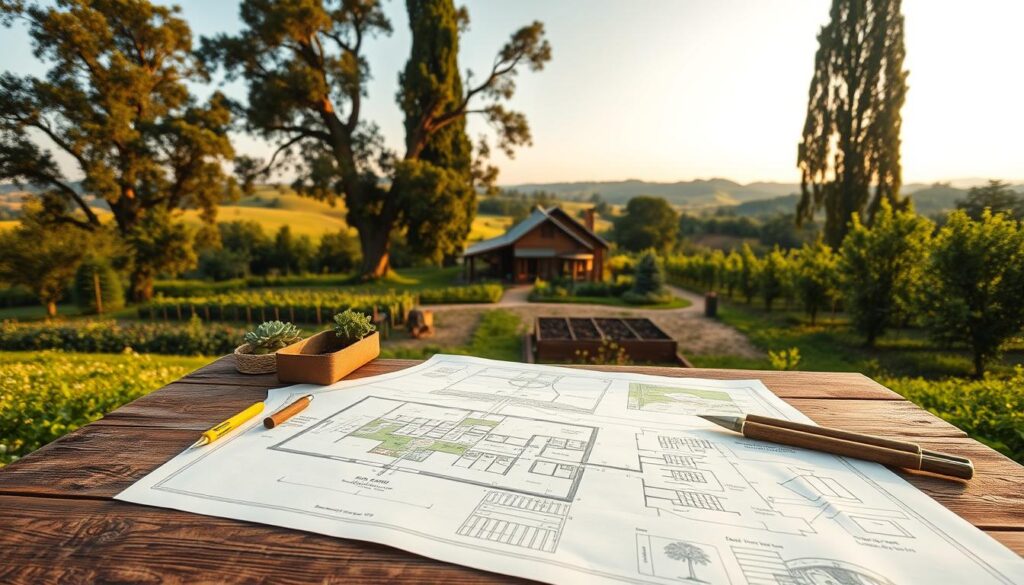
Choosing the Right Location
Selecting the ideal spot for your homestead involves more than just finding land. Look for a slope of 2-5% for proper drainage and water management. Analyze slope orientation to maximize solar gain, ensuring your garden and energy systems thrive.
Identify frost pockets and plan windbreaks to protect your crops. Livestock buffer zones can also help manage odors and maintain harmony on your property. These small adjustments ensure your homestead is efficient and sustainable.
Designing Your Homestead Layout
Designing your layout is about balancing functionality and aesthetics. Use permaculture zoning templates (Zone 1-5) to organize your space. Zone 1, closest to your home, is ideal for high-maintenance crops, while Zone 5 remains wild for biodiversity.
Consider raised beds versus in-ground gardening. Raised beds offer better soil control and drainage, while in-ground options are cost-effective. Rotational grazing plans and food forest layering principles can further enhance productivity.
Don’t forget essential toolshed organization systems and emergency access routes. These details ensure your homestead is both functional and safe. With careful planning, your dream of a self-sufficient life can become a reality in the best way possible.
Essential Homesteading Skills
Mastering essential skills is the cornerstone of a thriving homestead. Whether you’re growing vegetables, preserving food, or raising livestock, these abilities ensure self-sufficiency and sustainability. Start with the basics and build your expertise over time.
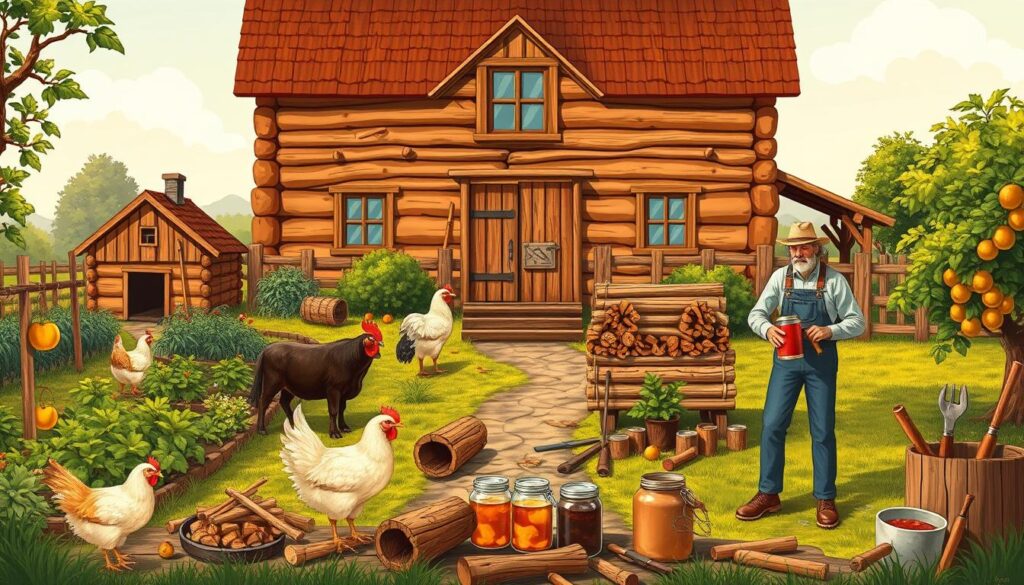
Gardening Basics
Successful gardening begins with understanding your space. Use square foot gardening charts to maximize yield in small areas. Succession planting ensures a continuous harvest, while companion planting naturally deters pests.
Soil health is crucial. Incorporate compost to enrich the soil and improve drainage. Growing herbs like basil and rosemary adds flavor to meals and attracts beneficial insects. Avoid planting poisonous species like nightshade near edible crops.
Food Preservation Techniques
Preserving your harvest extends its shelf life and reduces waste. Canning is a popular method, with Ball Canning Tested Recipes ensuring safety and preventing botulism. USDA-approved pressure canning timelines are essential for low-acid foods like beans and meats.
Compare preservation methods to find what works best. Freeze-drying retains nutrients but requires specialized equipment. Root cellaring is cost-effective for storing root vegetables like carrots and potatoes. Drying herbs is simple and preserves their flavor for months.
Raising Livestock
Raising livestock requires careful planning. Backyard chickens need at least 4 sq ft of coop space per bird. Choose breeds based on your climate and egg production needs. Goats require sturdy fencing, with a minimum height of 4 feet to prevent escapes.
Milk pasteurization schedules ensure safety when consuming dairy products. Avoid toxic plants like rhubarb leaves, which can harm animals. Proper care and feeding lead to healthy, productive livestock.
| Skill | Key Tips |
|---|---|
| Gardening | Use compost, succession planting, and companion planting. |
| Food Preservation | Follow USDA canning guidelines and explore freeze-drying. |
| Livestock | Provide adequate space, fencing, and avoid toxic plants. |
Starting Small: Urban Homesteading
Urban homesteading transforms small spaces into productive havens, proving that self-sufficiency is possible even in the heart of a bustling city. Whether you live in an apartment or a townhouse, there are creative ways to grow your own vegetables, compost waste, and cultivate herbs.
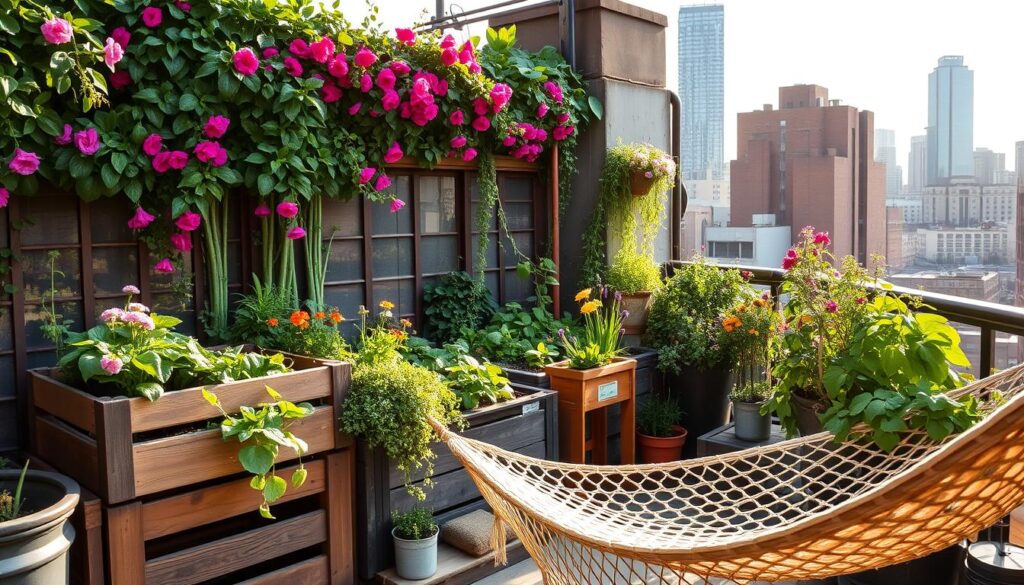
Container Gardening
Container gardening is a practical solution for limited space. EarthBox systems, for example, can yield 10-15 pounds of tomatoes in a single season. Fabric pots and self-watering containers are excellent choices for patios or balconies. Vertical hydroponic towers maximize vertical access, allowing you to grow more in less area.
For balcony fruit trees, pruning techniques like balkonobst ensure healthy growth. Window box herb rotation schedules keep your kitchen stocked with fresh flavors year-round. Always check fire escape gardening safety regulations to ensure compliance and safety.
Indoor Composting
Indoor composting is a sustainable way to reduce waste and enrich your garden soil. Bokashi composting eliminates odors in just 48 hours, making it ideal for small apartments. Compare indoor composters like the Worm Factory and NatureMill to find the best fit for your needs.
Regenerative apartment composting cycles turn kitchen scraps into nutrient-rich soil. LED grow lights with the right spectrum ensure your indoor plants thrive. For balconies, wind load calculations help you design sturdy setups that withstand the elements.
Negotiating with HOAs for urban livestock can open up new possibilities. With careful planning, even the smallest spaces can become productive homesteads.
Building Your Homesteading Community
Connecting with others can make homesteading more rewarding and sustainable. A strong community provides support, resources, and inspiration. Whether you’re trading produce or sharing skills, working together makes the journey easier and more enjoyable.
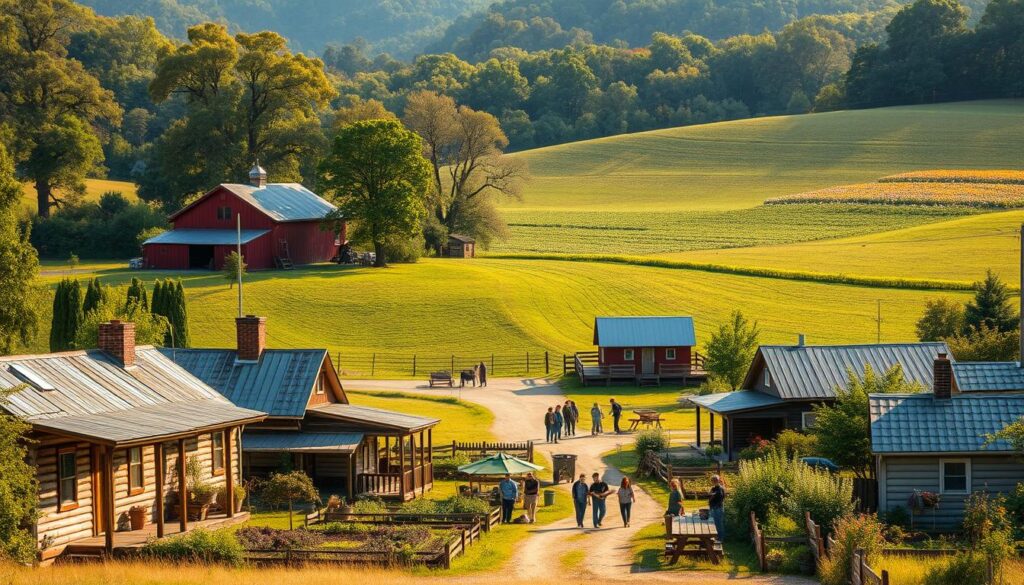
Did you know that 85% of homesteaders trade produce through local networks? Platforms like the Farmish app connect over 500,000 homesteaders worldwide. These tools make it simple to find friends and resources in your area.
Here are some practical ways to build your homesteading network:
- Join top forums like HomesteadingToday.com to connect with experienced people.
- Organize crop swaps using templates to ensure fair and efficient trades.
- Create cooperative equipment purchasing agreements to share costs and resources.
- Develop mentorship programs to accelerate your learning curve.
- Establish emergency mutual aid networks for crisis support.
Skill-sharing is another powerful way to strengthen your community. Host workshops on topics like food preservation or livestock care. These events foster collaboration and help everyone improve their skills.
Community projects, like managing a grain mill or planning barn-raising events, bring people together. Participating in county fairs is also a great part of building connections and showcasing your work.
“Homesteading is not just about self-sufficiency; it’s about building a network of support and shared knowledge.”
Here’s a quick comparison of community-building activities:
| Activity | Benefits |
|---|---|
| Crop Swaps | Diversify your produce and reduce waste. |
| Mentorship Programs | Learn from experienced homesteaders. |
| Emergency Networks | Ensure support during crises. |
Building a homesteading community takes effort, but the rewards are worth it. Together, you can achieve more and create a sustainable, fulfilling lifestyle.
Time Management for Homesteaders
Effective time management is a cornerstone of successful homesteading. With an average of 4.7 daily outdoor work hours, homesteaders must optimize their schedules to maximize productivity. A well-organized day ensures that essential tasks are completed without burnout.
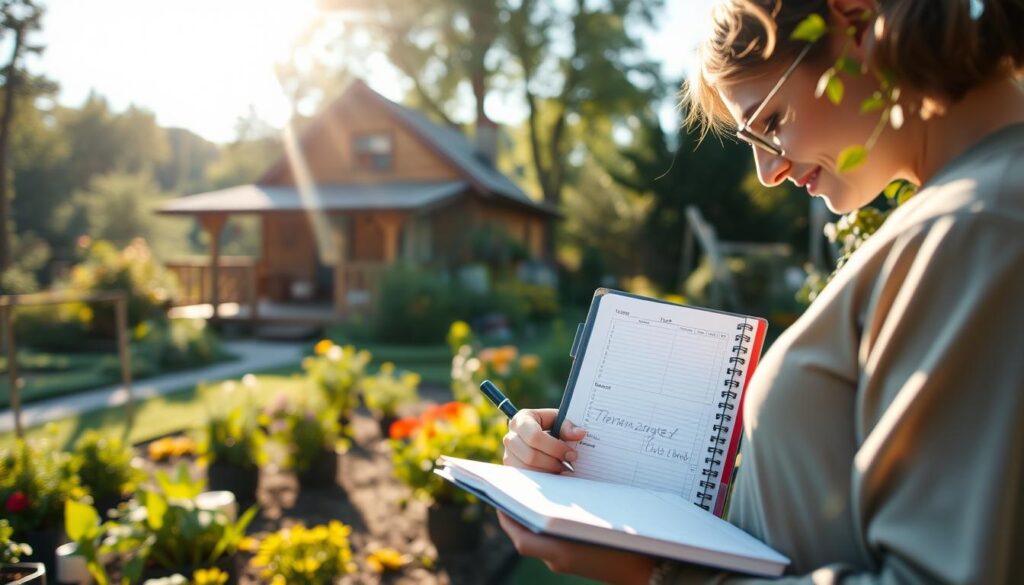
Seasonal task matrix templates are a great way to prioritize activities. These tools help you focus on planting, harvesting, and maintenance during the right time of year. Moon phase planting calendars can further increase efficiency by aligning tasks with natural cycles.
Time-blocking is another effective strategy. Dedicate specific periods for animal care routines, such as feeding and milking. This approach ensures consistency and reduces stress. Daylight utilization strategies, like starting early, can help you make the most of your day.
Frost date tracking apps are essential for planning planting and harvesting. They help you avoid crop losses and optimize your garden’s potential. Equipment maintenance schedules should also be part of your routine to prevent breakdowns during critical work periods.
Batch processing is a smart step for food preservation. Preparing large quantities at once saves time and energy. Childcare integration techniques, like involving kids in simple tasks, make homesteading a family part of life.
Multi-tasking methods, such as weeding while listening to educational podcasts, can boost productivity. Energy cycle tracking worksheets help you identify your most productive periods. Rest period planning is equally important to maintain balance and avoid exhaustion.
Here’s a quick comparison of time management strategies:
| Strategy | Benefit |
|---|---|
| Seasonal Task Matrices | Prioritize tasks by season |
| Time-Blocking | Ensure consistent routines |
| Batch Processing | Save time on food preservation |
By implementing these strategies, you can streamline your homesteading life and focus on the things that matter most. With careful planning, you’ll find more time to enjoy the fruits of your labor.
Financial Planning for Homesteading
Managing finances is a critical part of building a sustainable homestead. From paying off debt to investing in essential resources, smart financial decisions can set you up for long-term success. This guide will walk you through the key steps to ensure your property thrives.
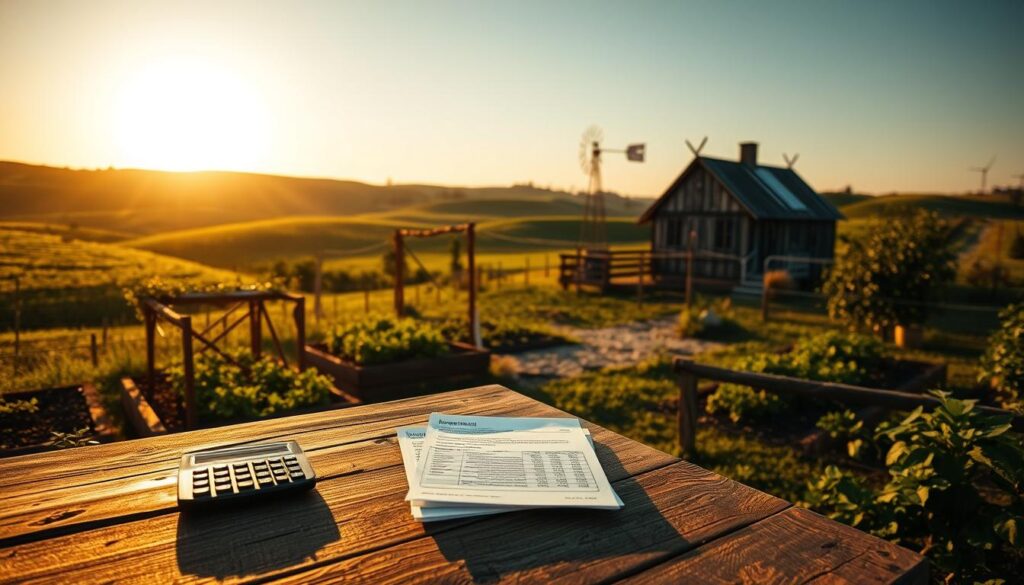
Paying Off Debt
Clearing debt is often the first step toward financial freedom. Many homesteaders use methods like the debt snowball or avalanche to tackle loans efficiently. The snowball method focuses on paying off smaller debts first, while the avalanche targets high-interest loans. Choose the way that works best for your situation.
USDA rural development loans are a popular option, with 60% of homesteaders leveraging them. These loans offer low-interest rates and flexible repayment terms. Additionally, USDA grants can provide financial support for specific projects, such as installing renewable energy systems.
Investing in Homesteading Essentials
Once your finances are stable, it’s time to invest in essential things for your homestead. The average startup cost for a 5-acre property is around $12,000. Here’s a breakdown of key investments:
- Livestock: Chickens offer a quick return on investment, with a typical ROI timeline of 6 months.
- Seeds: Compare heirloom and hybrid seed costs to find the best fit for your garden.
- Equipment: Leasing options can reduce upfront costs for tools and machinery.
- Tax Exemptions: Agricultural tax exemptions can save you money each year.
Rainwater systems and solar panels are also worthwhile investments. Calculate their ROI to ensure they align with your budget. Essential insurance policies, like property and liability coverage, protect your homestead from unexpected events.
| Investment | Cost | ROI Timeline |
|---|---|---|
| Chickens | $200-$500 | 6 months |
| Rainwater System | $1,000-$3,000 | 2-3 years |
| Solar Panels | $10,000-$20,000 | 5-7 years |
Bartering is another way to save money and build community connections. Use valuation guides to ensure fair trades for goods and services. With careful planning, your homestead can become a thriving, self-sufficient haven.
Learning from Experience
Experience is the best teacher, especially in homesteading. A staggering 92% of homesteaders report that their most valuable skills come from learning through failure. Journaling increases success rates by 40%, making it a powerful tool for growth. This section explores practical ways to turn mistakes into stepping stones for success.
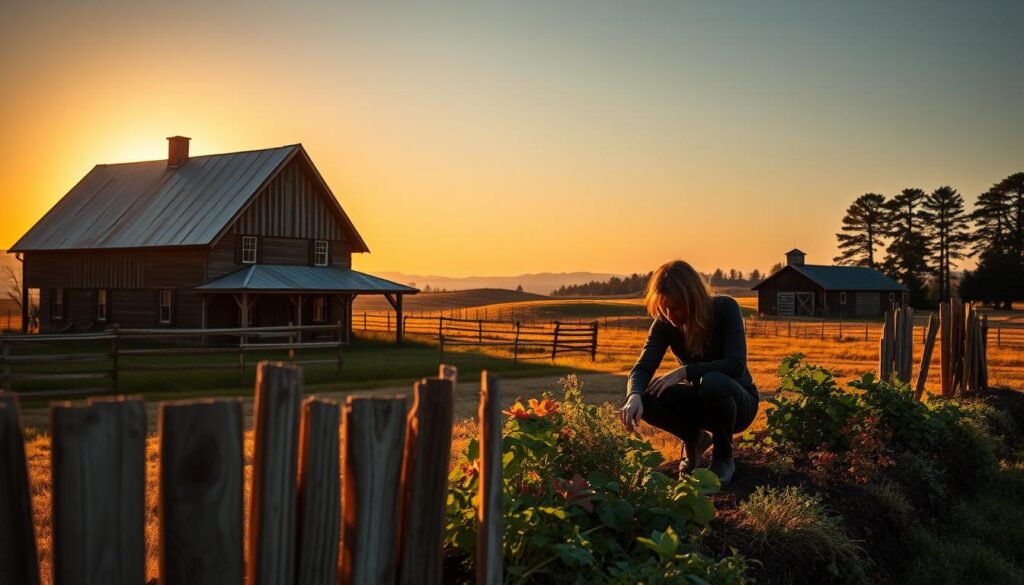
Start with failure analysis worksheet templates. These tools help you identify what went wrong and how to improve. Hosting “Homestead Hack” contests is another creative way to share innovative solutions with your community. These activities foster collaboration and inspire new ideas.
Mentorship journaling prompts are excellent for refining your skills. They encourage reflection and help you set actionable goals. Historical farming diaries offer timeless wisdom, while comparing traditional and modern techniques provides fresh perspectives. Post-harvest review processes ensure you learn from each growing season.
Generational knowledge is a key part of homesteading. Sharing stories and techniques with younger people preserves valuable traditions. Experimental plot strategies allow you to test new methods without risking your entire crop. Skill competency checklists help you track progress and identify areas for improvement.
Legacy planning ensures your homestead thrives for years to come. Friends and family can play a vital role in this process. Here’s a quick comparison of learning methods:
| Method | Benefit |
|---|---|
| Failure Analysis | Identifies areas for improvement |
| Mentorship Journaling | Encourages reflection and goal-setting |
| Experimental Plots | Tests new methods safely |
Over the year, you’ll see significant progress. These things are essential for long-term success. By embracing mistakes and learning from them, you’ll build a thriving homestead that stands the test of time.
Conclusion
Building a self-sufficient life begins with small, intentional steps. Homesteading is not about perfection but progress. With 78% of beginners achieving food independence in three years, your journey is more attainable than you think.
Take inspiration from Sarah, who transformed her urban balcony into a thriving garden. Her story shows that anyone can get started, no matter their space or experience. Download our homesteading resource toolkit for practical guides and templates.
Explore our recommended reading list and join our upcoming webinars for deeper insights. For personalized advice, sign up for a consultation. Don’t forget to celebrate small wins—they’re the foundation of your success.
Adaptability is key. Join our community challenge events to connect with like-minded people. Ready to take the first step? Plant your first seed today and watch your home transform into a haven of self-sufficiency.

